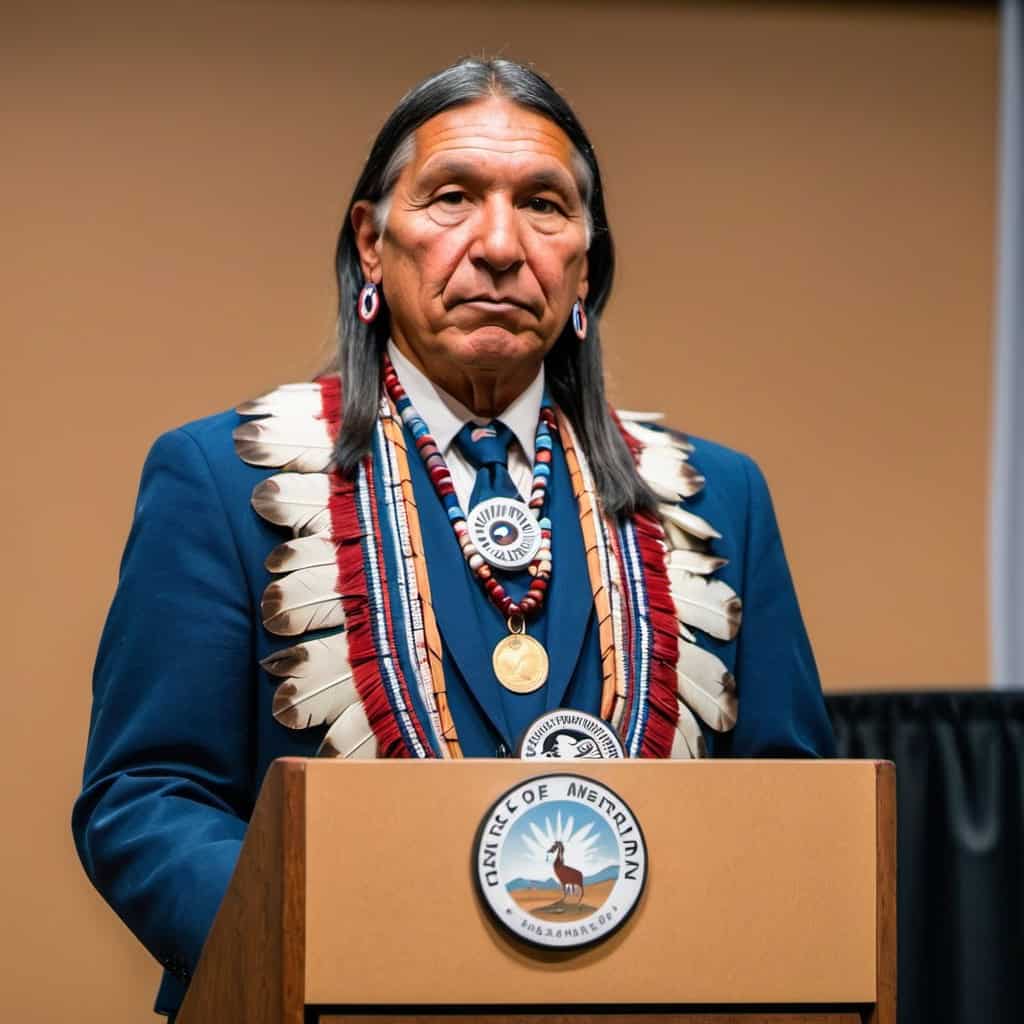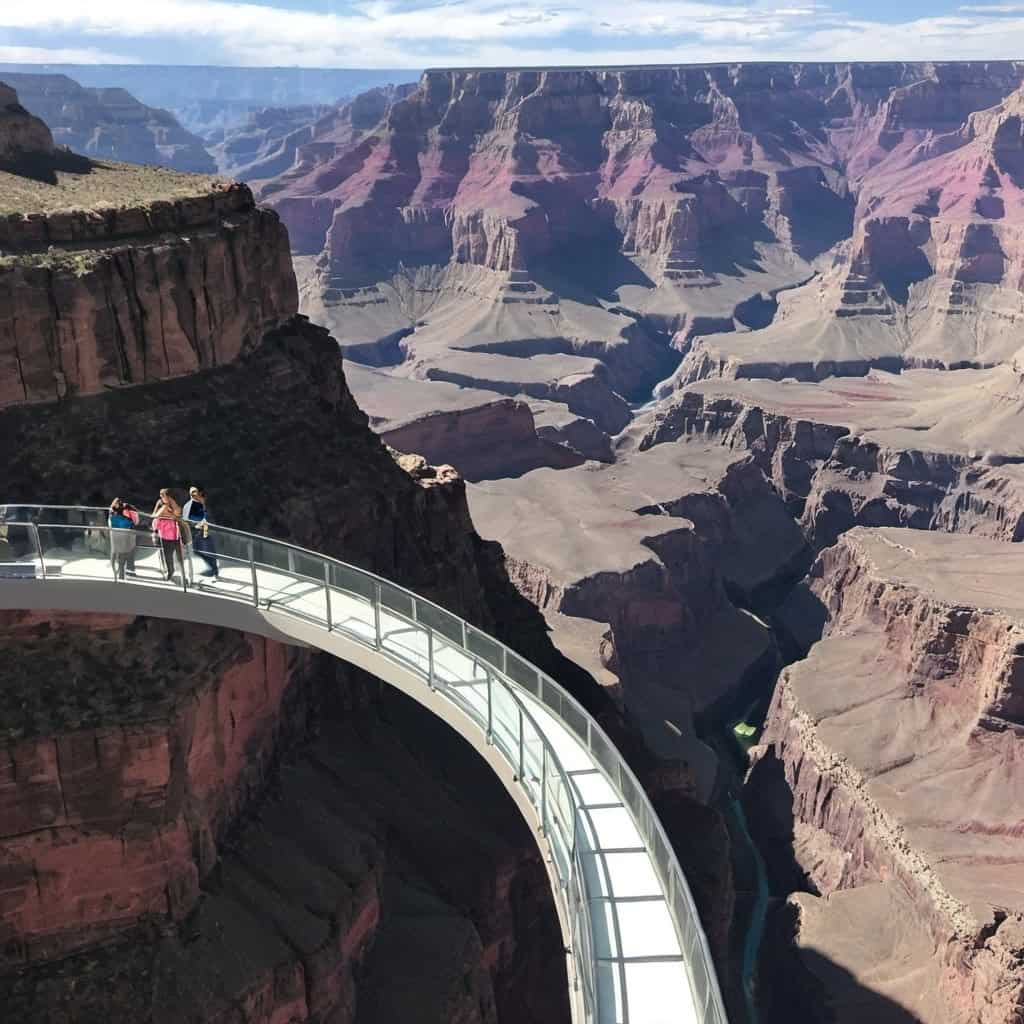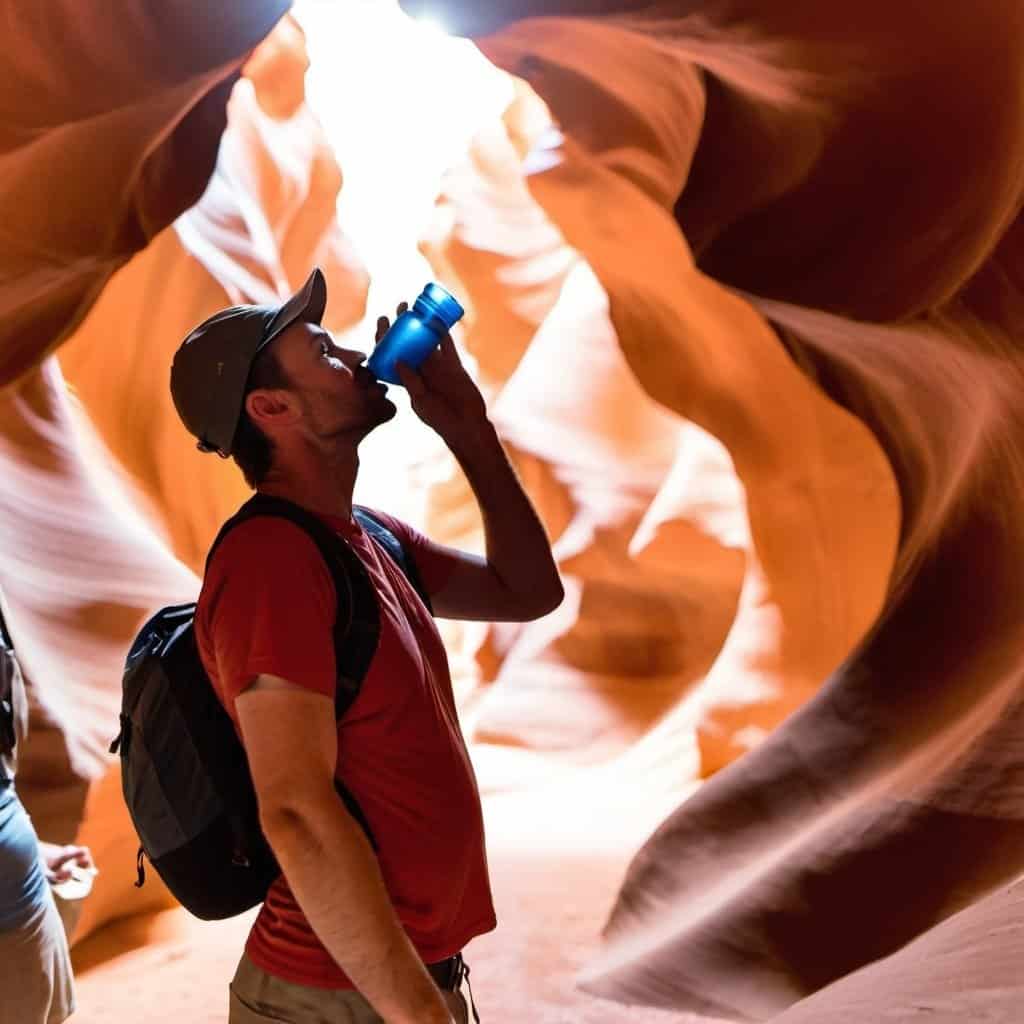Inadequate marketing, due to insufficient marketing budgets, are often cited as one of the most pressing obstacles for Native-owned tour operators in the United States. Especially as the tourism industry as a whole continues to recover from the COVID-19 pandemic.
However, just because slim operating margins prevent your business from large scale advertising campaigns it doesn’t mean you still can’t significantly improve ticket sales. There are several things you can do that will greatly improve your bottom line and grow your tour operator business – without breaking the bank.
Enhance the customer experience
Remember, word of mouth is still the #1 driver of tourism in the world. Direct referrals, positive reviews or social media posts from friends and family are the single largest influence on most tourists over where they will go (and spend their money) for their next vacation. Every single visitor to your tour represents your best marketing opportunity.
In other words, it is critically important that you treat every single guest as you would a member of your own family. Treat each visitor with utmost respect, show patience, and strive to answer any and all questions and accommodate their needs.
In many instances, your guests travel extremely long distances (often from overseas) to visit your tour. So it’s up to you to make sure they believe it was well worth the trip.
Share your story
Non-Native tourists generally want to (respectfully) understand your culture and heritage. It is one of the most oft-cited reasons for tourists wanting to visit Native lands. In other words, they don’t just want to learn about Native customs, traditions and history (they can do that reading books at home). They want to experience it.
There is a delicate line between cultural exploitation and cultural education, and it is certainly understandable that indigenous tour operators want to protect their heritage and sacred traditions from outsiders.
However, it is important to remember that most visitors to indigenous tourism attractions choose to do so for reasons beyond natural wonders or architecture. Tourists to Native American lands – especially those from overseas – by and large want to better understand and, if possible, fully immerse themselves and experience Native American culture. The spirituality, the history, the culture … as much as you are willing to share.
Tourists also want to be respectful, but may not be well versed in your culture (especially those with limited English proficiency), specifically what is considered rude or forbidden.
So share with them what you deem is acceptable manners and customs, offer a list of do’s and don’ts. Above all, offer to teach your guests about your Native rituals, customs and stories, without violating what you consider to be cultural boundaries. Welcome them onto your land as they would you to theirs. Allow them to immerse themselves as much as possible in your Native culture, within reason.
You will find that not only will most visitors be highly appreciative, they will have a much more memorable and enjoyable experience on your tour – and be more likely to recommend your tour to their friends and family back home.

Digital marketing is key – even if you don’t have a large budget
Let’s face it, if you want to have any chance of growing your tourism business, you’ve got to get online and understand digital marketing.
This doesn’t necessarily mean you need a large budget to take advantage of digital marketing. Many tour operators have struggled to grow their marketing budgets in recent years as they still try to recover from the COVID-19 pandemic. However, they can still reap the benefits of digital marketing so long as they understand it.
First and foremost, take a long hard look at your current website. Does it take a long time to load? Is it easily viewed on a mobile device? Is it easy for a visitor to your website to navigate, and make reservations? These are just some of the basic questions you can ask to see if your website may be costing you business.
Also, search engine optimization (SEO) is one of the most important elements of digital marketing. This simply means ensuring that potential visitors find you and your tour when they are searching for it (or something similar) on Google, Bing or Yahoo.
The best way to accomplish this is by continuing to add valuable content to your website, so that people searching for information find what they are looking for on your site. Articles that discuss your tour in depth, or advising would-be visitors on what (or what not to) bring with them are good starts. Other articles that provide information on promotions, surrounding hotels, campgrounds or airports are also solid. Pretty much any information that someone interested in your tour, the land or even your culture (within reason) would be worth posting on your website. Doing so will increase your ranking on Google, and as a result, increase traffic to your website.
Once you start posting quality content on your website it is critically important that you continue to do so on a regular basis. Should you stop posting new content, your website will drop on Google searches along with the corresponding traffic and it will take a long time to build that traffic back up again.
It takes months to build up a lot of organic traffic for your website, and can only be done through consistency and dedication. Try to post at least 2-4 quality articles (no less than 600 words) on your website per month. You may not see immediate traffic gains, but you will most definitely see them over time.
On a side note, don’t rely on artificial intelligence to create your articles for you. Search engines have already adjusted to the increasing use of AI, as have AI detectors, and may punish your website if you rely too heavily on it. AI can be useful in forming article outlines or generating new ideas for content, but relying on it to simply write your articles for you could backfire.

Audit your website
Your website is the single most effective and important marketing tool you will ever own. It is the first impression you will give to nearly all of your would-be customers, your company’s image and branding to the entire world.
So take the time to make sure it’s done absolutely right. Ask yourself some simple questions:
- Is it easy for the user to navigate?
- Does the website clearly explain the tour and set tourist expectations?
- Can someone book a day and time for a tour easily?
- Is there a call to action?
- Does the website take a long time to load? Especially when booking a reservation?
- Does the form fill or click to call functions work properly?
- Can people easily view and use the website on a mobile device?
- Is the website secure? Is your customers’ data safe?
If your website is lacking on any of these questions, there is a good chance your business is suffering as a result. So the most important investment you can make is to improve the quality of your website, which should result in improved sales almost immediately.
If your marketing budget is already maxed out but your website is subpar and costing you business, then think about reducing your advertising budget and redirecting those funds into revamping your website. After all, there is no sense in spending good money trying to drive potential customers to your website if the website doesn’t do a good job convincing them to book a reservation.
Joining forces – Build Partnerships through Affiliates
Tourism is the lifeblood of the Native American economy. Every business on Native lands benefits from it. Whether its restaurants, hotels, casinos, natural parks or museums, everyone wins when visitors spend their time and money in Indian Country.
So it only makes sense for Native tour operators to partner with other local small businesses to increase sales to their tour. Affiliate partnerships with nearby hotels, campgrounds, or even marinas can be mutually beneficial – driving new customers to both partners through cross marketing and promotions.
Are there any other tourism businesses near your area? Instead of competing against them, why not work with them?
Affiliates are a great way to drum up business at minimal cost. For example, if your tour is only say an hour or two hours, why not team up with other tours in the area and offer an all day experience?
Tourists who traveled very long distances to take your tour – those from Asia, Europe or Africa for example – are generally not going to be content doing a one hour tour then going back to their hotel room in the middle of the day. They want to get the most out of their vacation, and the best way to do that is to offer a full day, no hassles experience. One where you take care of all the details – everything from transportation, lunch and of course knowledgeable and friendly tour guides.
Speak with managers of other Native attractions in your area, such as casino entertainment enterprises, jeep or horseback tours, or other natural landmark tours to see if there is an opportunity to offer package deals. If your tourism operation is somewhat close to a major urban center, like say Las Vegas or New York, make deals with hotels, restaurants or shuttle services to offer to tourists as incentives.
Online affiliate deals with national travel brands such as TripAdvisor and Viator is also an easy way to get your tour in front of potentially millions of avid travelers and explorers. These partnerships work on a commission, usually 50%, so there is no upfront cost that hits your marketing budget. However, be advised that this also means you make less on every booking made through these affiliates, so you need to have your projections and reporting adjusted accordingly.
If you are unfamiliar with affiliate marketing, give us a call at (602) 560-8050 or email info@nativeamericantours.com, and we’ll be happy to help. Native American Tours software is designed specifically to help Native Tour operators seamlessly incorporate affiliates into their business model.
Speak to your Tribal Government
Many tribal governments and tribal organizations apply for, and receive, federal grant money intended to boost the tourism economy within their lands. These funds can be used for virtually anything tourism related, including for tourism feasibility studies and business plans for new or expanding Native tour operators.
Some Tribal governments still offer financial assistance for tourism businesses still recovering from the COVID pandemic.
Simply having a meeting with a representative from a Tribal Economic Development Department, or Tourism Department, can lead to a collaboration that can greatly help promote your business or reduce costs.

Tour guides are crucial to your business
If your tour operation offers guided tours, the people you entrust to be your tour guides can make or break your business.
Tour guides not only directly represent you and your business to visitors, but the depth of their knowledge, friendliness, kindness and professionalism will go a long way towards whether those visitors post positive reviews on travel sites or social media upon their return. Conversely, if your tour guide is rude, disrespectful, or does not possess meaningful knowledge or storytelling ability, not only will those guests not return, but neither will their friends and family.
So choose your tour guides carefully. Make sure they have a proper understanding and appreciation of your tour’s landmarks, artifacts or other attractions. Ensure they know and respect the Native culture, history and traditions that shape your tour.
During the interview process, see if they have the proper temperament, friendliness and courtesy to be your representative on the tour. Having a difficult or rude guest is going to be inevitable for any tour. How professionally your tour guide handles that situation can sometimes make or break a tour. The last thing you will ever want will be to “go viral” for all the wrong reasons.
And of course, don’t be apprehensive about paying more for top talent. A great tour guide may be your best resource for gaining new tourists and growing your business.
Don’t forget the reviews!
Recent surveys indicate that 83 percent of would-be travelers consider reviews to be an important or very important factor in making a booking decision. In fact, reviews are one of the first things tourists seek out before deciding on where to travel.
So if you have guests who loved your tour, don’t forget to ask for a review. When sending out thank you emails or texts, include pre-formatted links to Google reviews, TripAdvisor etc so a single click takes them to where they can post about your tour. Always make it as easy for happy tourists to post a review as possible.
It’s perfectly acceptable for the tour guides to ask for reviews as well if guests are very happy with their tour and tour guide. Many even allow guests to use their phones on the spot to write a quick review. Don’t be shy!
You can do this!
According to the American Indian Alaska Native Tourism Association (AIANTA), in the three years prior to the COVID-19 pandemic (2017-2020), Native tourism jobs increased a whopping 78%, and the number of Native tour companies increased 230%.
We all know what the pandemic did to the tourism industry, but indications are that Native tourism has not only since recovered, but is picking up right where it left off.
Based on the figures we are seeing, interest in Native American culture and history has never been higher – with more and more tourists, especially Millennials, expressing interest in visiting Tribal lands.
Native tourism is the lifeblood of the Native economy, and represents our best hope to provide good paying jobs to our people and lift Native people out of poverty for good. So thank you for all your hard work and dedication. We assure you, the best is yet to come.



